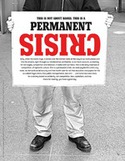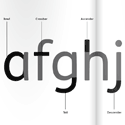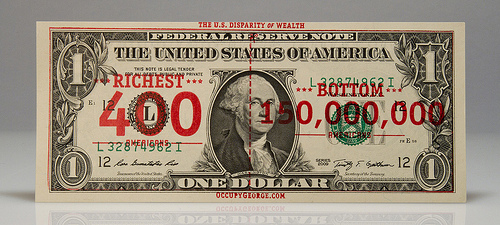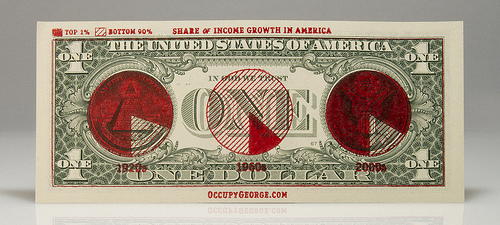November 2011
David Harvey at Occupy London
Marxist geographer and critical urbanist, Harvey breaks it down hard:
“You cannot solve the problem of global poverty without going after the accumulation of global wealth. Until you leave your anti-poverty campaigns and join the anti-wealth campaign, nothing is going to happen.”
Design Power
Hacking on a workshop plan and thoroughly appreciating Power - A Practical Guide for Facilitating Social Change:
“Power can be the ability to act visibly in ways that affect others, but it is also the power to act behind closed doors through more hidden and invisible means. Power can be about what is on the agenda, but also what is kept off; about who speaks, but also who does not; about whose voices count, as well as whose voices go unheard. As such, power is about what we see easily and experience directly, as well as what we do not see. For this reason, we need deliberate and creative ways to understand it and to make how power affects our everyday lives more legible and visible to ourselves and to others.”
And from Making Change Happen: Power (PDF):
“In reality, power is dynamic, relational and multidimensional, changing according to context, circumstance and interest. Its expressions and forms can range from domination and resistance to collaboration and transformation. This is good news for social justice promoters whose strategies depend upon new opportunities and openings in the practice and structures of power.”
Information design can be a useful tool to visualize and understand sources of power — and as a result facilitate the mobilization of power.
 The 4th printed issue of The Occupied Wall Street Journal was a special edition composed entirely of posters. 20,000 copies were printed and distributed throughout the movement. Since then, the project website has attracted a growing number of poster submissions from around the world, each available as a printable PDF.
The 4th printed issue of The Occupied Wall Street Journal was a special edition composed entirely of posters. 20,000 copies were printed and distributed throughout the movement. Since then, the project website has attracted a growing number of poster submissions from around the world, each available as a printable PDF. The site will soon post DIY suggestions, how-to videos, and other resources for anyone who wants to open a free occupation PrintLab.
Follow the Money
The tents have been cleared from the park, but the currency of ideas still circulate. Occupy George is a lovely Occupy Wall Street intervention that visually describes disparities in U.S. wealth on a bit of the wealth itself. It’s infographics in your pocket!
Posters Against Violence in Teen Relationships

This summer Artists Nicole Schulman and Tanya Albrigtsen-Frable worked with 15 young women, ages 14-18 in the in the Groundswell Community Mural Project Voices Her’d program to design a series of 8 posters for the organization Day One to educate young people about intimate partner violence in teen relationships, and how to get help if you are in an abusive relationship. You can see the posters online here and they will be available in print from Day One.
Nicole notes: “I am particularly proud of this project, the young women really took the lead, bottom lining all the designs, and completing them using traditional drawing, as well as Photoshop and Illustrator (which most had to learn).”
A blog set up by the teens shows the final designs, as well as their feedback, reflections and photos of the process.
 “FS Me is [a type family] designed to aid legibility for those with learning disability. FS Me was researched and developed in conjunction with - and endorsed by - Mencap, the UK’s leading charity and voice for those with learning disability. Mencap receive a donation for each font licence purchased.”
“FS Me is [a type family] designed to aid legibility for those with learning disability. FS Me was researched and developed in conjunction with - and endorsed by - Mencap, the UK’s leading charity and voice for those with learning disability. Mencap receive a donation for each font licence purchased.”Related: Read Regular, a typeface for people with dyslexia.




